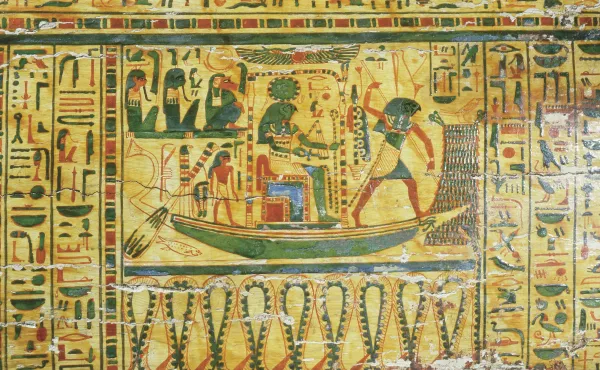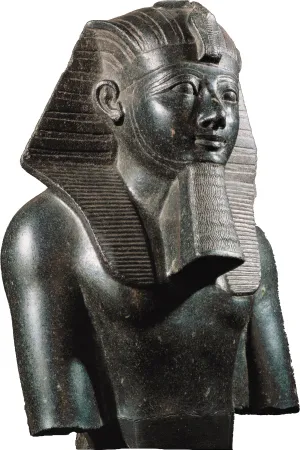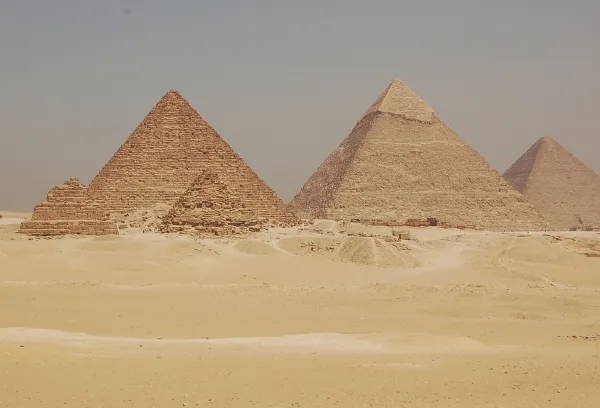![]()
Exodus
by Bruce Wells
Introduction
The narratives of Exodus, which describe God’s deliverance of the Israelites from Egypt, formed the basis for the Israelites’ relationship with God.1 The book narrates events at Mount Sinai and the establishment of the covenant there that later biblical texts refer back to repeatedly. Moreover, the combination of the exodus from Egypt and the creation of the Sinai covenant served as the paradigm for the people who returned from exile in Babylonia to their homeland in Judah. The ideas and the theological message of this book played an integral role in ancient Israel’s identity and self-understanding.
Historical Setting
The historical setting for the book of Exodus is essentially unknown. It describes events that lead to an escape of ancient Israelites from Egypt, but a specific time period during which events such as these might have taken place cannot be determined with certainty. Suggestions have been made (see below), and some accord better with the available evidence than others. The text of Exodus, however, yields too little information to establish a precise and convincing historical framework. The best one can do is to ascertain a broad time period into which the text attempts to place its narrated events.
Many scholars believe that the book of Exodus places the events it recounts in a time period that fits best within the second half of the second millennium B.C. In Egypt, this is known as the New Kingdom (1550–1069 B.C.). For the area of Syria and Palestine in western Asia, this time period includes the Late Bronze Age (c. 1550–1200) and the first part of the Iron Age (referred to as Iron I, 1200–1000).
It is in Iron I that remains of a distinctly Israelite character begin to appear in Palestine and go on to predominate throughout the Iron II period (1000–586; in 586 Jerusalem and much of Judah were overrun by the Babylonians).2 Any departure of Israelites from Egypt would presumably have taken place before this settlement process begins, and there are no compelling reasons to consider time periods prior to the New Kingdom in Egypt and the Late Bronze Age in Palestine. Moreover, in Palestine, the transition from the Late Bronze to the Iron Age is primarily one from Egyptian domination to a marked absence of Egyptian control.
It was during the New Kingdom that Egypt’s imperialistic ambitions grew.3 One of its early kings, Amenhotep I, led Egypt to renewed military success in Nubia (modern Sudan) to the south, and his kingdom began to reap economic benefits. Later, during the reign of Thutmose III, Egypt expanded its power into Syria and Palestine, subjecting a number of city-states to its control. This provided Egypt with access to a variety of raw materials, an important source of human labor from prisoners of war, military spoils, and tribute payments from vassal rulers. Such rewards motivated subsequent kings to continue to exert control over Syria and Palestine. An archive of letters from the site of el-Amarna (see comments on 1:15) amply attests to this.
Moroever, while Semitic slaves had been in Egypt for some time, it was during the New Kingdom that their numbers increased significantly. Building projects—tombs, monuments, temples—also grew until they reached unprecedented levels during the reign of Ramesses II. Thus, Egypt’s control of Palestine, its increasing numbers of Semitic slaves, and its swiftly growing construction efforts combine to make the New Kingdom an attractive option as a backdrop for the narratives in Exodus.
Notably, Egypt was able to maintain control over Palestine in spite of nearby powers that rivaled Egypt in size and strength. This was the time of the so-called Great Powers’ Club, which included, in addition to the Egyptians, the Hittites in Anatolia (Turkey), the Mitannians in northeast Syria, the Assyrians in northern Mesopotamia, and the Babylonians in southern Mesopotamia.4 The territories in Palestine and western Syria (often referred to as the Levant) were often caught in the vortex of international struggle. Whenever Egyptian power waned, for instance, the Hittites quickly reasserted domination over portions of the region, and vice versa.
But the end of the Late Bronze Age saw a widespread collapse in civilization across the ancient Near East. For the Levant, an especially critical element was the migration eastward, from the Aegean basin, of many different groups known as the Sea Peoples (see sidebar on “The Philistines” at 15:14).5 Their arrival coincides with the abandonment—and utter destruction in some cases—of a number of Late Bronze urban centers and the demise of Egyptian power in Syria and Palestine.
Subsequently, no political entity seemed able to project its authority into the Levant, leaving a vacuum of power throughout much of Iron I. It is within this vacuum that the small, fledgling nation of Israel, along with others (Edom, Moab, Ammon), begins to emerge. Therefore, an exodus not far removed from the decline of Egyptian control over Palestine toward the end of the Late Bronze Age seems the most attractive option for a possible Israelite escape from Egyptian domination (see sidebar on “The Timing of the Exodus, Part II” at 12:40).
Types of Literature
Exodus contains an array of literary forms, each of which can be found in other ancient Near Eastern societies. The grand saga describing the Israelites’ miraculous escape from enslavement in Egypt is epic narrative. In addition to the Ten Commandments, the book contains a long list of legal provisions; thus, the genre of law must be considered. The section concerning the construction of the tabernacle is an example of the ancient Near Eastern literary form used to describe the building of sacred shrines. There are also ritual instructions, such as the elaborate ceremonies required to consecrate Aaron and his sons as priests. The nature of these genres and how they were used must function as key elements in any background analysis of biblical texts. Thus, literary considerations are, at times, equally important as historical and cultural aspects o...






